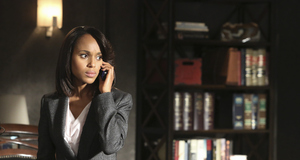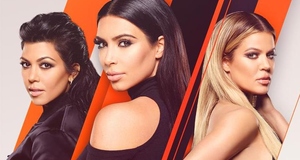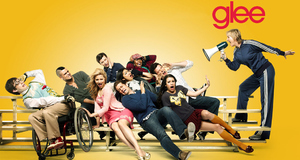From Elon Journal of Undergraduate Research in Communications VOL. 4 NO. 2The Construction of Southern Identity Through Reality TV: A Content Analysis of Here Comes Honey Boo Boo, Duck Dynasty and BuckwildThe Impact of Reality Television on Viewers' Perceptions of RealityAs stated earlier, Annette Hill has been one of the leading researchers of reality television's impact on viewers' perceptions of reality. Hill has studied this topic over the past decade and has published research from in-depth interviews and focus groups that has shed insight on how reality television influences viewers' feelings and attitudes towards subjects, along with their overall trust or mistrust in the programming. Hill's research has shown that most audience members are not naive to the fact that reality television is often "set up" and at least partially scripted. In fact, Hill's research has shown that viewers often discuss and even gossip about how subjects "perform" their roles and to what extent they are acting or being true to their identity. Ethical Issues of Representation in Reality TelevisionEspecially within the past few years, scholars have given heightened attention to ethical issues within reality TV production, viewing, and participation. As mentioned earlier, the editing process involved with reality television production leads to some ethical problems. Producers have the opportunity to include or exclude scenes often from many hours or days of filming. They are able to piece together scenes and show participants in a way that is most appealing or entertaining to viewers, inevitably contributing to the "construction" of the representation of reality television subjects. Jonathan Kraszewski wrote a chapter -"Country Hicks and Urban Cliques: Mediating Race, Reality, and Liberalism on MTV's The Real World" -in a book, Reality TV: Remaking Television Culture. There he discusses the ethical issues of representation in the MTV show, suggesting that the series is laden with racist elements that reinforce dangerous stereotypes. Kraszewski suggests that MTV producers in one season of the show have actually looked for racist participants, and when they were unable to find a participant who was "racist enough," they encouraged one participant to act as if he were, even though he claimed he "did not have a racist bone in [his] body."10 Another scholar has similarly noted that it is an ethical issue that viewers may be naive when it comes to casting decisions in that often, someone may be cast solely because that individual embodies and satisfies a stereotype.11 The Explosion of Southern StereotypesMany scholars and journalists have published highly opinionated articles on the recent popularity of reality television programs showcasing "redneck" culture in the American South. As mentioned earlier, Roger Catlin of the Washington Post recently covered both sides of the issue, interviewing experts in the field and finding mixed reactions: While some fervently believed that these shows build upon and proliferate existing negative stereotypes, others felt that the shows are not derogatory because subjects are shown in an affectionate way that lets viewers connect to something both raw and real. Eric Deggans' recent article on NPR, on the other hand, argues that these shows are both disappointing and completely unacceptable and should not be universally embraced and celebrated. While scholars and journalists have expressed their views by publishing a number of articles on the topic, to date, no quantitative research has been done to explore the issue. Therefore, this paper will serve to provide key, data-driven insights in a specific subject area that has not yet been given this attention. The thesis statement of this study is that the proliferation of reality television shows featuring subjects from the American South exacerbates the existing stereotypes associated with these communities. The following research questions were derived from the thesis.
IV. MethodologyContent analysis was used to quantitatively measure the exploration of this topic. Three reality television shows were selected for the analysis: Here Comes Honey Boo Boo (TLC), Duck Dynasty (A&E), and Buckwild (MTV). These shows were selected as they all contain subjects from and take place in the American South. These shows were also chosen because of their range in network, geographic location, and age of the subjects. Here Comes Honey Boo Boo airs on TLC and takes place in the rural town of McIntyre, Georgia. It follows the daily activities of 7-year-old Alana "Honey Boo Boo" Thompson and her mother, father, and three teenage sisters. The show was born out of TLC's Toddler's and Tiaras, a child pageant reality show where Alana and her entire family proved to be entertaining, larger than life characters apparently deserving of a television show dedicated to chronicling their daily lives. The popularity of the young star and her family is undeniable; according to an article from Parade magazine, Honey Boo Boo was one of the ten most Internetsearched reality stars of 2012. Duck Dynasty, which airs on A&E, follows the lives of the Roberston family in West Monroe, Louisiana. The series primarily follows Willie Robertson, the company's current CEO, while he tries to keep his family, who all work for the company, away from distractions. The family became extremely wealthy from their business, Duck Commander, which makes products for various duck hunting activities. The network's website for the show states, "They may be living the rags-to riches American dream, but they're just as busy staying true to their rugged outdoorsman lifestyle and southern roots." According to A&E, it is the network's most watched series and is in its third season. Buckwild is a recently cancelled reality show on MTV that follows the lives of several young adults in both Sissonville and Charleston, West Virginia. The show features a group of young adults who have just graduated high school and are either taking classes at local colleges, working at businesses in the area, or not working at all. The show mainly follows the group as they engage in dangerous stunts, go out drinking, or get into fights with each other, neighbors, family members and friends. Following the death of main character Shain Gandee due to a carbon monoxide poisoning incident, the show was cancelled in early April 2013. Each show was evaluated for four stereotypes sometimes associated with the South. Those elements included unintelligent, crude, violent or unhealthy actions. After reviewing literature identifying southern stereotypes, these four factors were chosen for the study. Many authors have published articles on what they argue to be southern stereotypes proliferated through both politics and the mainstream media. Kristin Rawls of political journalism site Salon.com published an article last year arguing that the "white trash" representation of southern culture makes it seem as if the entire community is uneducated. While underfunded education remains a problem throughout the South, Rawls asserted that the representation of Southerners as universally unintelligent is inaccurate and leads to a dangerous misunderstanding of the entire community.12 The crude and violent stereotypes surrounding Southern culture may stem from films like Deliverance, which came out over 40 years ago. The influence of this film, according to University of Tulsa professor Robert Jackson, was both "powerful and pernicious." In an interview with CNN he said, "It's had a tenacious hold on people's imaginations, establishing the hillbilly as a kind of menacing, premodern, medieval kind of figure."13 The study included the unhealthy stereotype as the final factor for evaluation primarily because of the association of the South with high obesity rates. In 2011, a study from the nonprofit organization Trust for America's Health in conjunction with the Robert Wood Johnson Foundation found that nine of the ten states with the highest obesity rates were in the South. Mississippi, Alabama and West Virginia were at the top of the list, with obesity rates of 34.4%, 32.3%, and 32.3% of the state's population, respectively. This information was based on data from the CDC. According to Jeff Levi, executive director of the Trust for America's Health, this may be due to high rates of poverty in the South and a traditional diet that is unhealthy.14 The researcher fully acknowledges that selection of these stereotypes may be a limitation to the study. By narrowing the subject matter to four stereotypes for analysis, some stereotypes are neglected. In addition, no stereotypes with positive connotations have been included, limiting the results of this study so as to provide only insight into the prevalence of negative stereotypes. Additionally, the interpretation of the representation of the frequency of these stereotypes is, of course, personal;, therefore, the results of the study may be largely dependent upon who is conducting the research. These four factors, unintelligent, crude, violent and unhealthy, must be defined in more specific terms in order to explain the data collection. Any behavior that could be deemed "unintelligent" was included in the analysis. This included any time a character mispronounced or struggled over a word, used words like y'all or ain't, or any time a character expressed an obvious lack of awareness in a topic and it was brought to attention either by other characters or by the producers. It also included any instances of subjects making ignorant comments about other cultures or current events.Continued on Next Page » Suggested Reading from Inquiries Journal
Inquiries Journal provides undergraduate and graduate students around the world a platform for the wide dissemination of academic work over a range of core disciplines. Representing the work of students from hundreds of institutions around the globe, Inquiries Journal's large database of academic articles is completely free. Learn more | Blog | Submit Latest in Business & Communications |

















